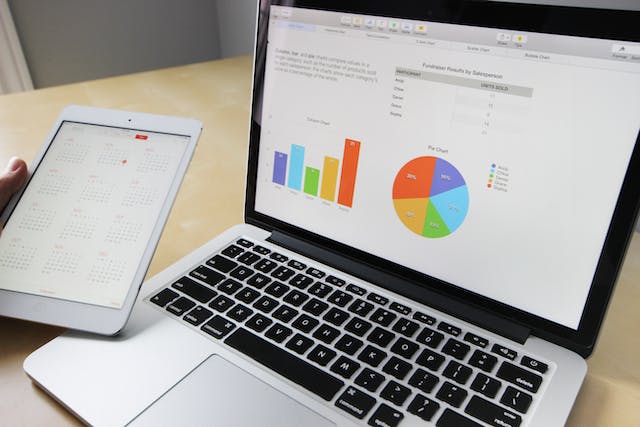You’ve paid off your debts, you’ve built up your savings, and now you’re standing at the next exciting stage of the financial ladder: investing. The big question so many people have at this point is when to start investing and how much money you need to feel ready. The truth is, the best time to start investing is as soon as possible, because time is your greatest ally when it comes to building wealth. But before you jump in, let’s make sure your financial safety net is strong enough to keep you steady while you take this next step.
How Much Should You Save Before You Start Investing?
There isn’t a one-size-fits-all answer, because your personal situation plays a huge role. Owning a house, driving to work every day, having children or a partner who doesn’t earn an income — all of these things affect how much money you need in your savings before you feel safe investing.
As a rule of thumb, you should make sure your most important savings accounts are properly filled. These are:
- Savings account: The place where you set aside money regularly. This is the account you’ll later use for your first investments.
- Emergency fund: Enough money to cover at least three months of your essential spending. For example, if you spend $2,000 per month, aim for $6,000 here. This money is your financial safety cushion — fill it once and only touch it in true emergencies.
With these two basics in place, you’re already on solid ground to start investing.

Other Savings Accounts to Think About
Before you start investing, it’s also smart to prepare for the more “everyday emergencies.” These smaller accounts protect you from dipping into your investments whenever life throws a surprise your way.
- Unexpected things: For repairs or sudden costs. Aim for around 2.5% of your monthly income, with a good buffer of about $650.
- House maintenance: If you own a home, set money aside for repairs. A small monthly contribution is much better than one big financial shock.
- Car maintenance: Even if it’s just $500, this fund can save you stress when your car needs attention.
- Health maintenance: Depending on your country’s healthcare system, you may want a savings cushion here. For example, a 40-year-old could keep around $2,000 aside for medical costs.
And if you’re the only earner in your family, add at least one month of extra expenses for each child into your emergency planning.
Savings Example: A Young Single Adult
Imagine a 30-year-old who lives in Germany, rents an apartment, and relies on public transportation. Without a car or house to maintain, their financial picture looks fairly straightforward. In this case, building an emergency fund equal to three months of expenses will probably be enough. If their monthly spending is around $1,800, that means setting aside about $5,400. On top of that, keeping a small buffer of $500 to $1,000 for life’s little surprises — like needing a new phone or covering a medical bill — adds even more security. Once those accounts are in place, this young single is ready to begin investing without worrying about being derailed by everyday costs.
Savings Example: A Single Mother of Three
Now picture a 45-year-old single mother living in the United States, raising three children and depending on her car for work and daily life. Her financial responsibilities are much heavier, and so is the need for a stronger safety net. In her case, aiming for an emergency fund equal to six months of expenses is wise. If her family spends $3,000 each month, this means building a cushion of $18,000. On top of that, she should have an additional $3,000 to $3,500 set aside for car and house maintenance. Life with children often brings unexpected costs, so topping up her “Unexpected Things” account regularly gives her the peace of mind she needs. Once these accounts are filled, investing becomes realistic and safe, because she knows her family is protected from sudden expenses.
Savings Example: A Family Father with a Stable Income
Finally, let’s look at a 50-year-old father living in Spain, with two teenage kids, two cars, and a wife who also earns a good income. His situation is much more stable, which means he doesn’t need quite as large a cushion compared to the single mother. An emergency fund equal to three months of family expenses will give him a strong base. Let’s say the household spends $4,000 each month — then $12,000 in the emergency account is enough. Adding around $1,500 for car costs and a steady monthly transfer into a house maintenance account prepares him for the bigger repairs that come with owning property. With his wife’s income as a backup, he can start investing with confidence, knowing the essentials are well covered.
Where Do You Want to Go on the Financial Ladder?
Reaching this stage already means you’ve achieved financial security — congratulations! You can stop here, keep your emergency funds healthy, and enjoy life. But if you’d like to keep climbing, investing opens the door to bigger goals.
- Step Five: The first investment. Put your money to work, even just enough to outpace inflation.
- Step Six: Passive income. Let your money grow in stocks, real estate, or other investments, and enjoy the results over time.
- Step Seven: Retirement plan. Build enough wealth so your investments give you a strong yearly income.
- Step Eight: Financial independence. Stay consistent, avoid big unnecessary expenses, and watch your money provide freedom for the rest of your life.
Your Goal for Step Four
The key now is balance. Keep your savings up to date with inflation and rising costs, but don’t hold back from using the rest of your money in ways that bring you joy. Once your safety net is secure, the door is open: you’re ready to start investing and watch your money grow.
Disclaimer
This blog is for informational purposes only and should not be your sole guide for financial decisions. Always consult with a qualified financial professional before making major financial commitments.




